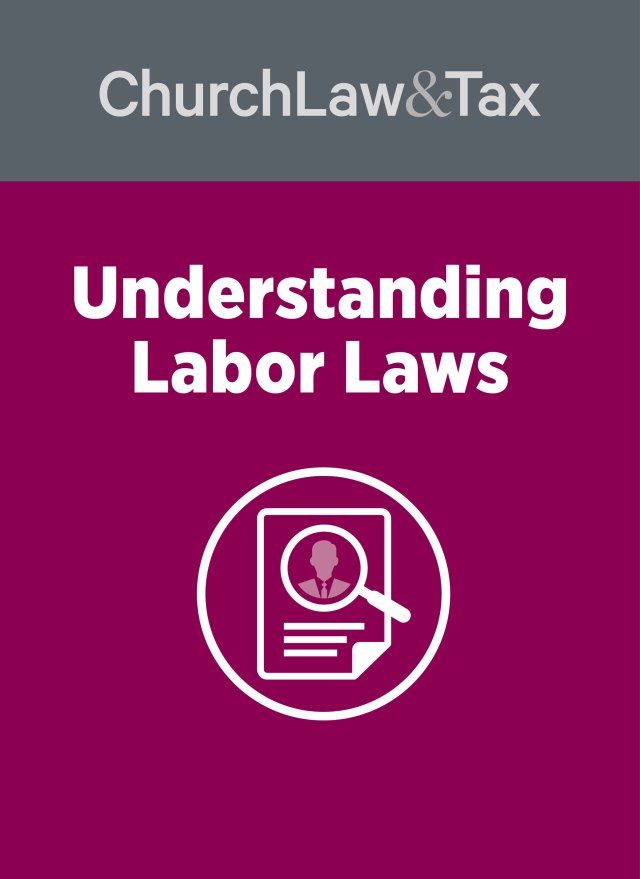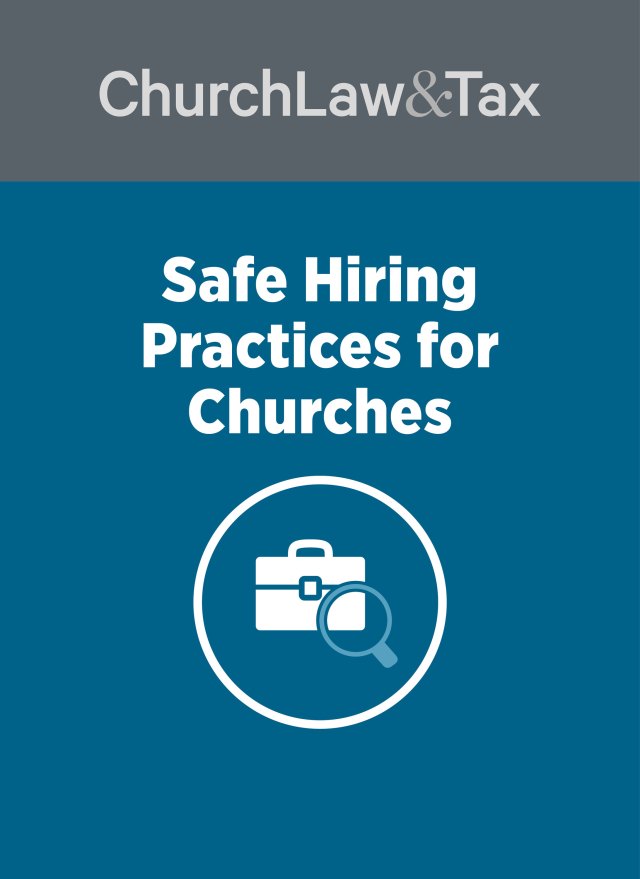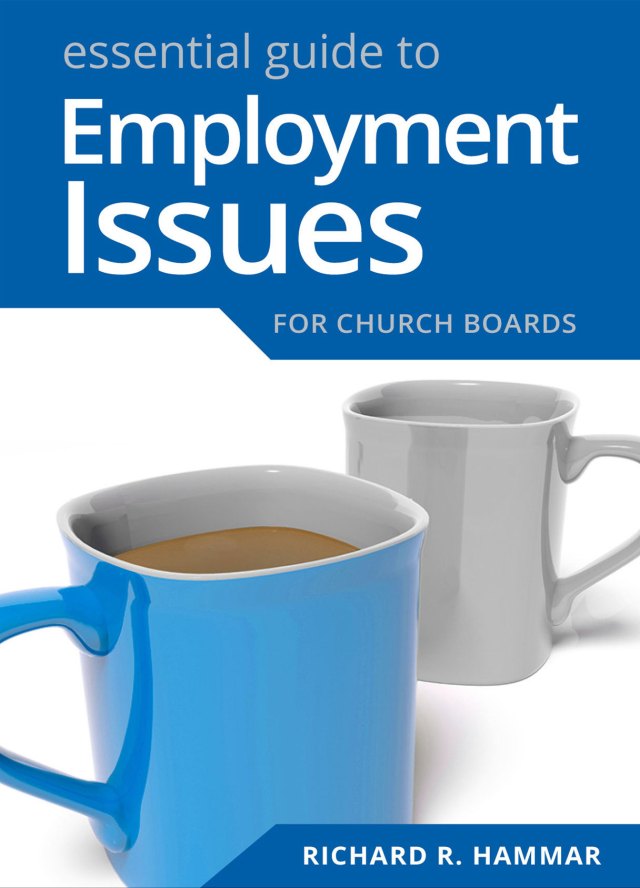• Key point 2-04.1. Most courts have concluded that they are barred by the first amendment guarantees of religious freedom and nonestablishment of religion from resolving challenges by dismissed clergy to the legal validity of their dismissals. Termination
• Key point 8-06. The civil courts have consistently ruled that the first amendment prevents the civil courts from applying civil rights laws to the relationship between a church and a minister. The Civil Rights Act of 1964
• Key point 8-08. Title VII of the Civil Rights Act of 1964 prohibits employers engaged in commerce and having at least 15 employees from discriminating in any employment decision on the basis of race, color, national origin, gender, or religion. The Civil Rights Act of 1964
A federal appeals court ruled that the first amendment guaranty of religious freedom prevented it from resolving a sex discrimination claim brought by a minister against her former church. A woman (“Pamela”) graduated from seminary and was ordained as a Baptist minister in 1988. In 1992 a Methodist church employed her as its singles’ minister. The next year she became the church’s associate minister. In this new position she served communion, assisted in baptisms, performed marriages, and conducted funerals. As part of the long process of having her ordination recognized within the Methodist Church, she was interviewed by the United Methodist Board of Ordained Ministry, which unanimously recommended to the bishop of the Central Texas Conference that she be ordained.
After working at the church for a few years, Pamela questioned why her pay was substantially lower than that of the male ministers she had replaced. She also requested a housing allowance because she and her family had moved out of the parsonage to free up space for other church use. In response, the church made several adjustments to her compensation package.
In 1995, Pamela informed church officials that she and her husband were going to have a baby. Shortly after the baby was born she took some accrued vacation time and began an eight-week maternity leave (a benefit extended to clergy under church policy). After giving birth, she suffered serious post-partum complications, which required hospitalization, surgery, heavy medication, and extensive rest. During this period of incapacity, Pamela’s position within the church was questioned by her pastor who challenged her competence, performance, and honesty. In addition, a church committee concluded that she was a lay employee rather than a member of the clergy, and on this basis the church retroactively denied her the maternity benefits she had been granted and demanded she repay those benefits that had already been paid to her.
When Pamela returned to work, she was informed that she had been terminated and that she was required to leave the premises immediately. She filed a complaint alleging sex discrimination with the Equal Employment Opportunity Commission (“EEOC”). The EEOC dismissed the claim on the ground that Title VII of the Civil Rights Act of 1964, which prohibits sex discrimination in employment by covered employers, permitted religious organizations to discriminate on the basis of religion. Pamela sued both the Central Texas Conference of the United Methodist Church and her local church, alleging discrimination on the basis of her sex and her pregnancy in violation of Title VII. She claimed that the deprivation of her benefits and her termination were the conclusion of a practice of discrimination that included substandard pay and treatment while she was employed.
A trial court dismissed the lawsuit against both the Conference and church on the ground that a resolution of Pamela’s sex discrimination claim was prohibited by the first amendment guaranty of religious freedom. Pamela appealed.
A federal appeals court began its opinion by noting that “the question before us is whether the free exercise [of religion] clause of the first amendment deprives a federal court of jurisdiction to hear a Title VII employment discrimination suit brought against a church by a member of its clergy, even when the church’s challenged actions are not based on religious doctrine.” Pamela conceded that the courts have long recognized a “clergy exemption” from employment discrimination laws. Under this “exemption,” the courts have consistently ruled that they are barred by the first amendment from resolving employment discrimination claims brought by clergy. However, Pamela insisted that this exemption was repealed by the Supreme Court in a 1990 decision (Employment Division v. Smith).
In the Smith case, the Supreme Court addressed the question of whether state employees who were Native Americans could be dismissed and denied unemployment benefits as a result of their use of peyote for religious purposes. The Court ruled that “the right of free exercise [of religion] does not relieve an individual of the obligation to comply with a valid and neutral law of general applicability on the ground that the law proscribes (or prescribes) conduct that his religion prescribes (or proscribes).” As a result, the state’s application of neutral laws to these employees’ religious practices did not violate their first amendment rights. Similarly, in 1997 the Supreme Court ruled that “when the exercise of religion has been burdened in an incidental way by a law of general application, it does not follow that the persons affected have been burdened more than other citizens, let alone burdened because of their religious beliefs.” City of Boerne v. Flores, 521 U.S. 507 (1997).
Pamela argued that the “clergy exemption” was in effect eliminated by these two Supreme Court rulings since in both cases the Court held that the first amendment does not bar the application of “neutral laws” to religious practices. Therefore, the courts are permitted to resolve sex discrimination claims brought by clergy under Title VII, which is a “neutral law.” The court disagreed. It emphasized that government actions can violate the first amendment guaranty of religious freedom in two distinct ways: (1) by interfering with a believer’s ability to observe the religious practices of his faith, or (2) by encroaching on the ability of a church to manage its internal affairs. The Supreme Court’s decision in the Smith case did not address the first amendment’s protection of a church against government encroachment into the church’s internal management. Rather, it addressed the protection “afforded an individual to practice his faith.” As a result, the Smith analysis (neutral laws can be applied to religious practices) should be applied to individuals, but not necessarily to churches. The court quoted from a recent decision addressing the same question:
The burden on free exercise [of religion] that is addressed by the ministerial exception is of a fundamentally different character from that at issue in Smith …. The ministerial exception is not invoked to protect the freedom of an individual to observe a particular command or practice of his church. Rather it is designed to protect the freedom of the church to select those who will carry out its religious mission. Moreover, the ministerial exception does not present the dangers warned of in Smith. Protecting the authority of a church to select its own ministers free of government interference does not empower a member of that church, by virtue of his beliefs, to become a law unto himself. E.E.O.C. v. Catholic University, 83 F.3d 455 (D.C.Cir.1996).
The court noted that many of the courts applying the clergy exemption “rely on a long line of Supreme Court cases standing for the fundamental proposition that churches should be able to ‘decide for themselves, free from state interference, matters of church government as well as those of faith and doctrine’ …. [W]e cannot believe that the Supreme Court in Smith intended to qualify this century-old affirmation of a church’s sovereignty over its own affairs.” The court concluded,
Smith’s language is clearly directed at the first strand of free exercise law, where an individual contends that, because of his religious beliefs, he should not be required to conform with generally applicable laws. The concerns raised in Smith are quite different from the concerns raised by [Pamela’s] case, which pertains to interference in internal church government …. [The Smith case] which concerned individual free exercise, did not purport to overturn a century of precedent protecting the church against governmental interference in selecting its ministers.
The court then addressed Pamela’s claim that her allegation of sex discrimination could be resolved without any inquiry into religious doctrine or practice, and therefore the clergy exemption should not apply. Once again, the court disagreed, noting that the justification for the clergy exemption is two-fold:
The first concern is that secular authorities would be involved in evaluating or interpreting religious doctrine. The second quite independent concern is that in investigating employment discrimination claims by ministers against their church, secular authorities would necessarily intrude into church governance in a manner that would be inherently coercive, even if the alleged discrimination were purely nondoctrinal. This second concern is the one present here. This second concern alone is enough to bar the involvement of the civil courts. In short, we cannot conceive how the federal judiciary could determine whether an employment decision concerning a minister was based on legitimate or illegitimate grounds without inserting ourselves into a realm where the Constitution forbids us to tread, the internal management of a church. This case involves the interrelationship between two important governmental directives-the congressional mandate to eliminate discrimination in the workplace and the constitutional mandate to preserve the separation of church and state …. [B]oth of these mandates cannot always be followed. In such circumstances, the constitutional mandate must override the mandate that is merely congressional. Thus, we are persuaded that the first amendment continues to give the church the right to select its ministers free from Title VII’s restrictions.
Application. This case is important for two reasons.
1. The Smith case. The court concluded that the Supreme Court’s decision in the Smith case did not affect the clergy exemption from employment discrimination laws. The Smith case has generated considerable confusion since it was decided in 1990. This court’s analysis of the two varieties of first amendment protection is helpful in clarifying the application of Smith. The Smith case dealt only with the application of neutral laws to individual religious practice. The Supreme Court concluded that individuals cannot “be above the law” by defending their noncompliance on the basis of some religious practice. To rule otherwise would unleash a flood of new “religions” advocating all kinds of criminal practices (drug use, child molestation, murder, etc.). The Smith case stands for the proposition that individuals cannot justify such violations of neutral criminal laws on the basis of their religious beliefs. On the other hand, the first amendment guaranty of religious freedom, for more than a century, has come to mean that the government cannot meddle in the internal governance of religious bodies, including the selection or removal of clergy. There is absolutely no justification for applying the Smith ruling in this context. Therefore, neutral laws cannot necessarily be thoughtlessly applied to religious bodies without offending the first amendment guaranty of religious freedom. This is a very helpful analysis that will be useful in protecting church practices against government intrusion in future cases.
2. Basis for the clergy exemption. Another important aspect of the court’s ruling was its conclusion that the justification for the clergy exemption from employment discrimination laws is two-fold. It is based not only on the danger of civil court review of religious doctrine, but also on the fear that in investigating employment discrimination claims by ministers against their church, a court “would necessarily intrude into church governance in a manner that would be inherently coercive, even if the alleged discrimination were purely nondoctrinal.” This second justification bars the courts from resolving employment discrimination claims of clergy even if it is alleged that the case can be resolved without any inquiry into doctrine or religious practice. This is an important clarification, for it means that the clergy exemption applies despite a minister’s claim that his or her discrimination lawsuit will not require any judicial interpretation of religious doctrine. Combs v. Central Texas Annual Conference of the United Methodist Church, 173 F.3d 343 (5th Cir. 1999).
© Copyright 2000 by Church Law & Tax Report. All rights reserved. This publication is designed to provide accurate and authoritative information in regard to the subject matter covered. It is provided with the understanding that the publisher is not engaged in rendering legal, accounting, or other professional service. If legal advice or other expert assistance is required, the services of a competent professional person should be sought. Church Law & Tax Report, PO Box 1098, Matthews, NC 28106. Reference Code: m88 m43 c0500




